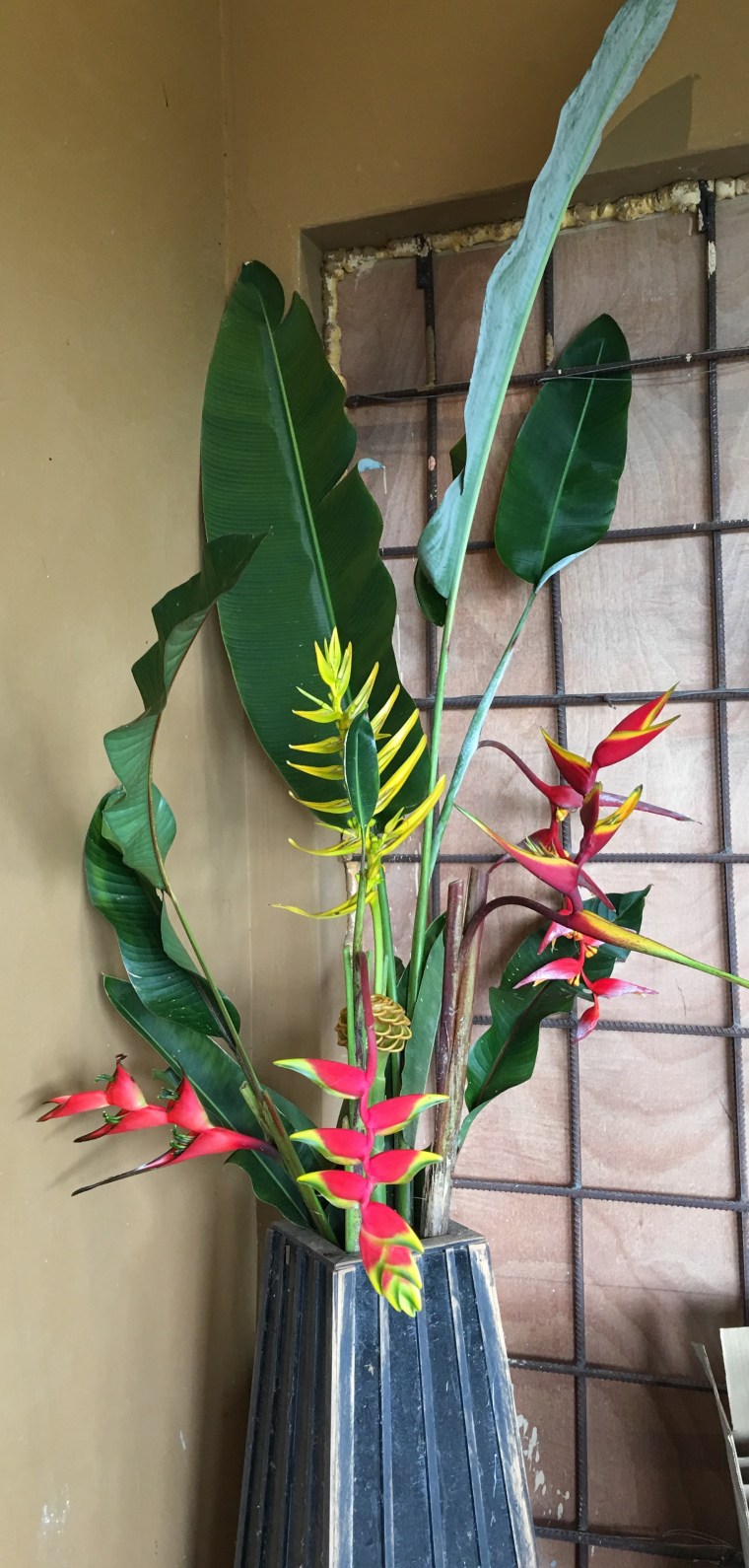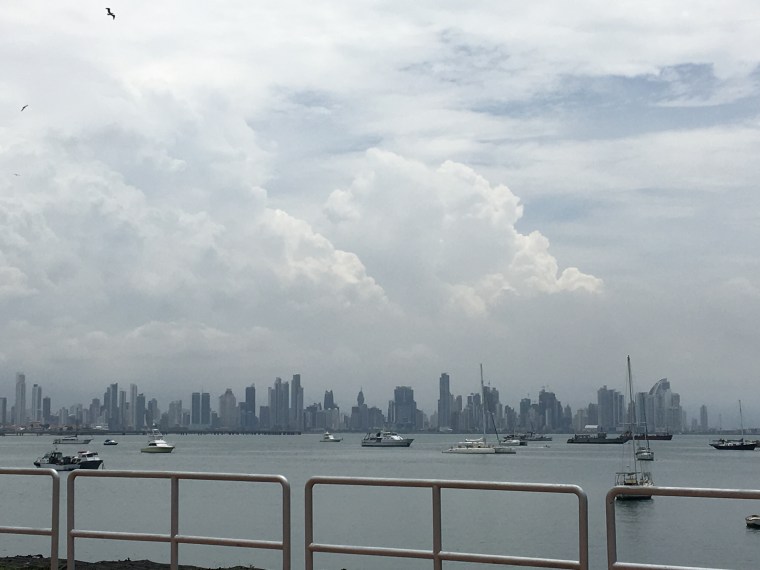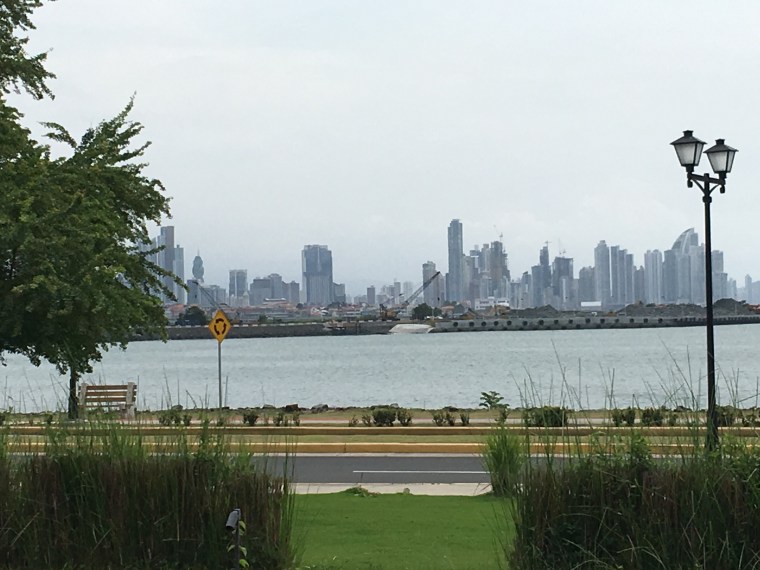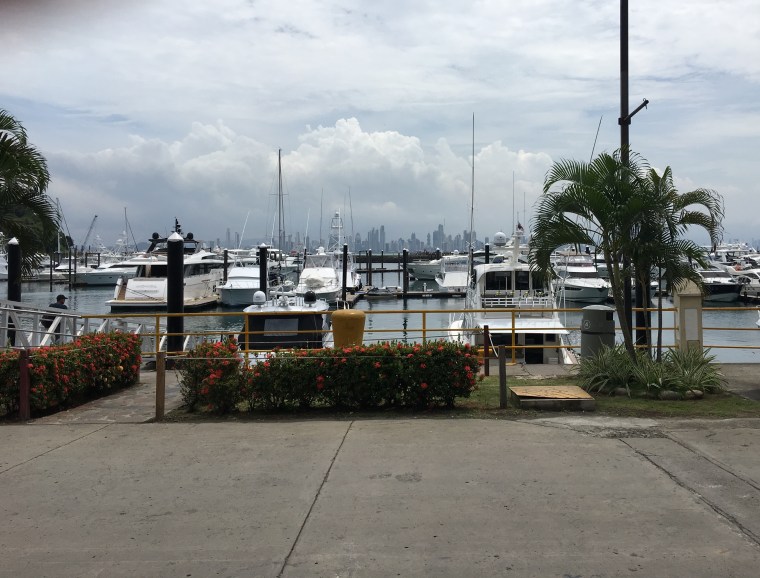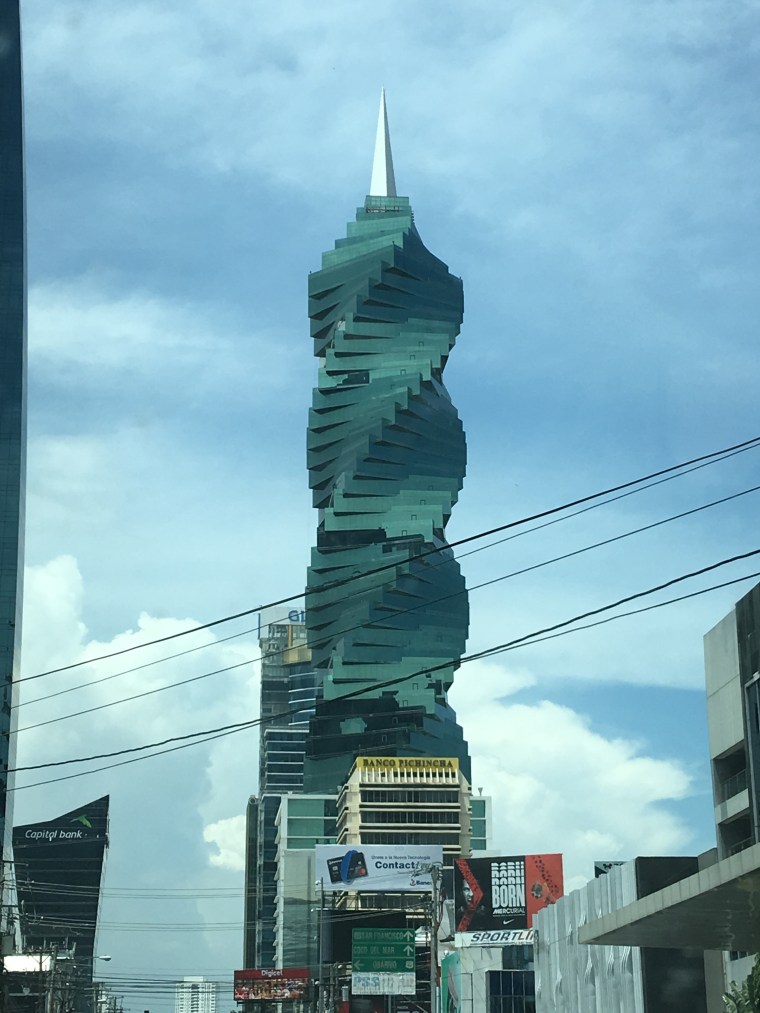Eternal Spring
Hola from Panama City, Panama —
We arrived in Panama 2 weeks ago and it’s been a busy time for us. Having established a plan to try various locations in Panama before we figure out where we might ultimately want to settle, and since we entered Panama from its western boundary, it made sense for us to start our residency in Panama in the area of Boquete in Chiriqui Province. Boquete makes sense for many reasons aside from the proximity — for starters, it is beautiful. Set in the mountains of western Panama, the Boquete area is very popular with expats (mostly from the US and Canada) because it IS so beautiful and because the weather is described as “eternal spring,” with temperatures between 60-80 degrees Fahrenheit daily, year round. It is a place of many micro climates and Boquete is where the country’s coffee is grown as well as where a large variety of fruit and vegetables thrive. Boquete also appeals to expats because it is a smaller town where people can develop a sense of community. It appeals to us for those reasons and more, not the least of which is the friends we made there 4 years ago when visiting who have been invaluable in terms of their support, their encouragement and the giving of their time and familiarity with the area. We might have survived without Holly and Scott (and Luana and Bond) but it would not have been as rich an experience.
Once we arrived in Boquete and rented a storage facility to use for the goods that had been piled in truck and trailer for the 60k miles of the journey here, we set about to lighten our load, repair things on the truck and in Wolfie, and to start to establish our first 6 months in Panama. We traveled to the nearby city of David to join the local warehouse club called Price Smart, traded in our “Central American” SIM card purchased from Claro in Guatemala for a Panamanian phone SIM card from the same company, purchased auto parts needed for brake work on Gertie, scouted out major grocery stores to get a lay of the land, took a road tour (led by Scott and Holly) of the various Boquete-area micro climates, celebrated Roque’s birthday, responded to real estate advertisements and after visiting several possible rentals, committed to a lovely single-story home in the community of Los Molinos in Alto Boquete for 6 months, had meals out in Boquete in restaurants and at friends’ homes, got the bikes repaired and more.
At the end of the first week, we had a 6 month lease in hand starting on September 1 which gave us several weeks to start the legal processes necessary to make Sharon, Gertie and Wolfie permanent residents and so, we headed to the capital city. We learned quickly what we intuitively believed before we got to Panama City: things take longer than we might have hoped and we needed to take things one little step at a time.
Patience is a Virtue
Here’s an example of one day in which we accomplished one tiny bureaucratic step toward permanent residence. To get the pensionado visa that Sharon hopes of have, she needs a FBI background check newer than 18 months old. Because of the 18 month requirement, we knew we could not bring an FBI background check along on the trip since it was likely to be “expired” by the time we arrived in Panama. Step 1 to obtaining the background check is to obtain fingerprints to send to the FBI (again, no older than 18 months). The good news is that we can get fingerprints done in Panama without returning to the US and we set out to do that on Tuesday but the long line at the DIJ (the local equivalent of the FBI) dissuaded us and we decided to return later. We couldn’t return on Wednesday and so we got up early on Thursday so we could arrive at DIJ before its 7 am opening time, at which point we were told to return at 8 when the fingerprinting office opened (the long lines being for other things that didn’t apply to us). When we returned and were escorted to meet the fingerprint tech, she asked if we brought the fingerprinting form we needed. Of course we didn’t have the form! (Later, it clearly made sense that we would have to bring our own form – how first world of us to thing that Panama would have the FBI Form FD-258 on hand). So, back to the hotel during rush hour we went – first to print the form and then to make sure that the form on plain paper — rather than the standard blue cardstock — was acceptable. We printed the form, traveled back to DIJ and were finished with the fingerprinting part of the exercise by 11:30. All good. Well, except that we cannot pick up the form until the Police Chief signs it and that will take at least 3 business days, taking us to Tuesday, at the earliest. Once the fingerprint card is ready for pick up, we must bring it to the Panamanian Minister of Foreign Affairs who can authenticate the signatures. Once this is done, we can then forward the card to the FBI and the process will continue from there. Thus, one set of fingerprints will take us about a week to accomplish.
This is not anyone’s “fault.” Had we known what we know now, we could have taken care of this on the first day we arrived in Panama City and likely, we would have accomplished this task by the time we were originally scheduled to leave. But, as many wise people have said before me, sometimes you don’t even know the questions to ask let alone how to get the answers that you need. Our story of the fingerprinting is like tons of stories that we’ve heard from people we’ve met along our travels such as people from outside the US who cannot get a “transit visa” to travel from Mexico City to Australia via LAX requiring rerouting around the world, literally, to get where they needed to go (a transit visa is a special visa required simply to enter an airport in the United States which, in this case, was denied to a Nicaraguan youth who was traveling to Australia to attend school); Europeans whose US visas would expire before they could drive from the lower 48 to Alaska and back (the visas continue to run while they are in Canada which makes travel to Alaska virtually impossible); a German couple whose German-prescribed medicine sat in Canadian customs for so long that the cost to obtain the prescription medicine (banned in Canada but legally prescribed in Germany) was greater than a trip back home to get more; a Dutch couple who had US permanent residency cards that they could NOT give back no matter how many US officials and offices they tried. Bureaucracies exist everywhere and we are pretty certain that all can be excruciatingly difficult and tedious.
Tiny but Mighty
Notwithstanding the small bureaucratic headaches that have been a part of our first couple of weeks in Panama, our time here has been wonderful. For such a tiny country, Panama has amazing diversity – of races, of religions, of cultures, of geography and biodiversity. There are many things here that are new to us (or new again) and that we like: cafeterias that serve a lovely and wide variety of Panamanian dishes at inexpensive prices; this delicious Panamanian fried bread called hojaldras; inexpensive bottles of wine; good (and free) highways; Aleve; Kosher grocery stores with speciality food items, potable water in many locations, really nice grocery stores with huge selections of local and international products; the best and fastest cell and data service that we’ve had on this trip; inexpensive cell data plans, places where you can literally see the Pacific Ocean and the Caribbean at the same time; the best bagels we have had outside select locations in the US; restrooms with both toilet seats and toilet paper, no headaches converting currency and discounts for jubilados (retirees) at museums, restaurants and more.
In Panama City, we have eaten Popeye’s fried chicken and Vietnamese pho and Japanese sushi and we just missed dim sum today by a half an hour. We’ve also had sancocho, and arroz con pollo, and ropa vieja and patacóns (the Panamanian version of tostones). And we enjoyed some of the most innovative cuisine of the whole trip at lunch on Wednesday at Fonda Lo Que Hay in Casco Viejo – a restaurant offshoot of Dónde Jose (where we dined 4 years ago) which is a funky casual restaurant where former local gang members are taught to cook and run a restaurant. Oh, and of course we’ve had great coffee.
We have seen many changes in Panama City in the 4 years since we last visited and have enjoyed exploring the neighborhoods of El Cangrejo, Avenida Balboa, Casco Viejo, Paitilla, Amador, Albrook and Costa del Este. We visited Roque’s home in Las Cumbres and the spot (now vacant) where his primary school was located and the Rio Abajo neighborhood that was home to family members when he was a youth here. We’ve walked the Cinta Costera for miles and enjoyed the incredible vibrancy of Panama City’s “malecón,” with soccer courts, weight lifting stations, bike paths and playgrounds – a sort of Venice, California meets GW Bike Trail meets Washington Square Park kind of place with huge sweeping vistas of the city from pedestrian walkways that cross from Avenida Balboa to the Cinta Costera.
We learned, at the Biodiversity Museum – a gorgeous Frank Gehry designed museum – that there is more arboreal diversity in 1 hectare of land in Panama than in all of North America combined and that the isthmus that is current day Panama was a literal land bridge that formed millions of years ago, closing the gaps that existed between the continents of current day North and South Americas, allowing flora and fauna to move north to south and south to north in ways that are unique on the planet. We also learned that Panama, in addition to being nearly hurricane proof is also nearly earthquake proof because of the way that the tectonic plates have formed around Panama.
From our friends who have expatriated to countries outside the United States, we have oft heard the mantra that there is no perfect place and we this has echoed in our heads as we have wandered along the 60,000 miles of this journey. In our earlier blog posts, we described why we decided to expatriate to Panama and what we hoped we would find there. Along the road, we evaluated spots in the US outside our last home in Washington, DC to see if there were places where we might enjoy if we decide to return to the US. Through Canada, Mexico and Central America, our antennae were tuned to signals that called out to us in a “pick me, pick me” voice. While our list of “must haves” was, in many respects, rather generic (safety, proximity to loved ones, stability of governance and economy, etc) we also had specific requirements that were more challenging to meet. Our comfort as an inter-racial, inter-ethnic and inter-religious couple who have retired from the work force is, we realize now, a profoundly more difficult thing than we might have thought when we set out 19+ months ago. For those of you who have ever watched the HGTV show called House Hunters, you know that when a family has 4 “must haves” on the list, it is inevitable that the family will find 3 but rarely all 4 of its essentials. Maybe that’s another way to describe the fact that there is no perfect place. A wise person once told us that one’s life is like a table and that the legs of a table represent various aspects of one’s life: one leg might represent career, and another might represent family with the other 2 representing social and health. A table is most stable with 4 legs but can stand solidly with 3. Fewer than that, the table topples. Maybe we can only ever get 3 out of 4 legs on solid ground but fewer than that, we know we gotta keep moving. The criteria are rarely literally limited to 4 and it is a more intuitive than analytical process oftentimes. But you know it when it’s there, when it’s solid enough, or when it’s not. And perhaps that will be our definition of “perfect enough.”
Stay tuned as we discover more about our new home and whether it will be our “perfect enough.”

